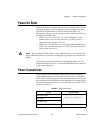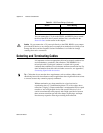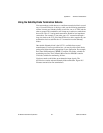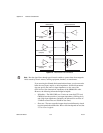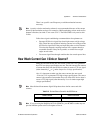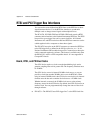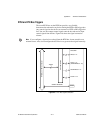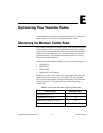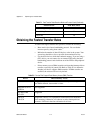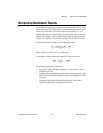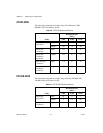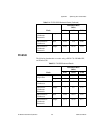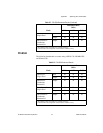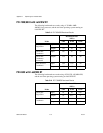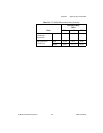
Appendix E Optimizing Your Transfer Rates
653X User Manual E-2 ni.com
Obtaining the Fastest Transfer Rates
To achieve the highest transfer rates possible, consider the following:
• Burst mode is the fastest handshaking protocol. You can further
increase speed by using short cables.
• Minimize the number of other I/O devices active in the system. Your
system bus should be as free as possible from unrelated activity.
• Use the 6534 devices, which have onboard memory. If you are using a
6533 device, you can connect it to an external FIFO using the burst
handshaking protocol and clock data out of the FIFO to the peripheral
device.
• Direct-memory access (DMA) transfers are faster than interrupt-driven
transfers, especially for pattern I/O. Refer to Table E-2 to determine
whether your device supports DMA transfers. If DMA transfers are
available, the software will use it by default.
Handshaking Trailing-Edge Pulse 1.8
Handshaking Burst 20
Pattern I/O 20
Table E-2.
Devices That Support Direct-Memory Access (DMA) Transfers
Device Direct-Memory Access
AT-DIO-32HS Supported if system DMA resources available. If you are using
two DMA channels, data transfer is faster.
DAQCard-6533 for
PCMCIA
Not supported
PCI-DIO-32HS
PCI-6534
Supported
PXI-6533
PXI-6534
Supported if device is in a peripheral slot that allows bus arbitration
(bus mastering). Otherwise, use software to select interrupt-driven
transfers. PXI chassis have bus arbitration for all slots.
Table E-1.
Peak Transfer Rates Based on Mode and Protocol Used (Continued)
Mode/Protocol Peak Rate (MS/s)



